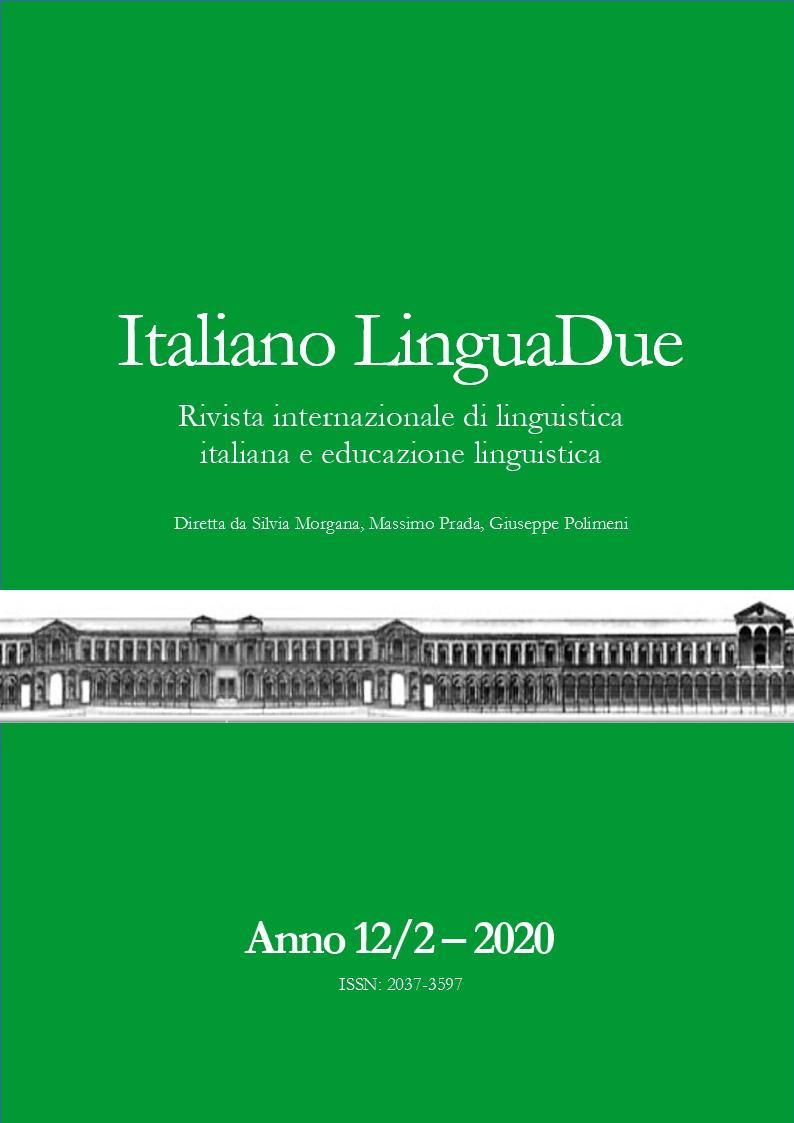INSEGNARE L’ITALIANO A STUDENTI CROATI: SISTEMA TEMPORALE E ASPETTO VERBALE (IMPERFETTO E PASSATO PROSSIMO)
DOI:
https://doi.org/10.13130/2037-3597/15073Abstract
L’articolo riferisce i risultati e le considerazioni, anche in termini di proposta didattica, emersi dall’analisi della produzione scritta in lingua italiana di studenti croatofoni delle università di Zagabria e di Fiume (Rijeka) riguardo l’apprendimento del sistema temporale italiano. Nello specifico sono state studiate le modalità di selezione e di uso combinato dei tempi imperfetto e passato prossimo del modo indicativo. Nonostante una certa corrispondenza tra i tempi passati delle due lingue sia a livello morfologico che aspettuale, condizioni per un transfer positivo, gli studenti hanno incontrato problemi nella scelta del tempo adeguato in determinati casi. Ciò riflette le differenze tra le due lingue riguardo la valenza di alcuni avverbiali temporali, l’uso delle perifrasi verbali, ecc. L’analisi contrastiva risulta preziosa in quanto strumento di riflessione in classe e di osservazione per l’insegnante. Ad essa però debbono affiancarsi specifiche attività didattiche (“fare con la lingua”), che vanno a integrare la componente metalinguistica della glottodidassi, rafforzando le abilità linguistiche in corso di sviluppo. In questo contributo si presentano tre attività task-based che hanno portato a un netto miglioramento nell’impiego dei due tempi passati.
Teaching italian to Croatian students: time and verbal aspects (‘imperfetto’ and ‘passato prossimo’)
The article reports the results and considerations, also in terms of teaching proposals, that emerged from the analysis of the written production in Italian of Croatian-speaking students at the universities of Zagreb and Rijeka regarding learning the Italian tense system. Specifically, the selection methods and combined use of the imperfect (imperfetto) and the perfect (passato prossimo) of the indicative mode were studied. In spite of a certain correspondence between the past tenses of the two languages on both morphological and aspectual levels, conditions for a positive transfer, students encountered problems in choosing the appropriate tense in certain cases. This reflects the differences between the two languages with regard to the value of some temporal adverbials, the use of verbal periphrases, etc. Contrast analysis is valuable as a classroom reflection and observation tool for the teacher. However, it must be accompanied by specific teaching activities (“doing using language”), which integrate the metalinguistic component of the language teaching, strengthening the linguistic skills being developed. The paper presents three task-based activities that led to a clear improvement in the use of the two past tenses.




